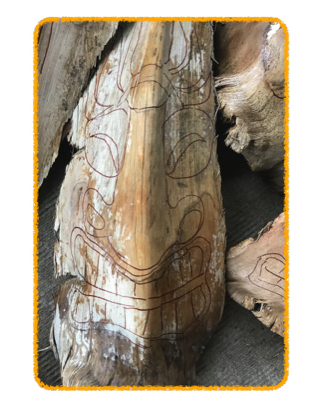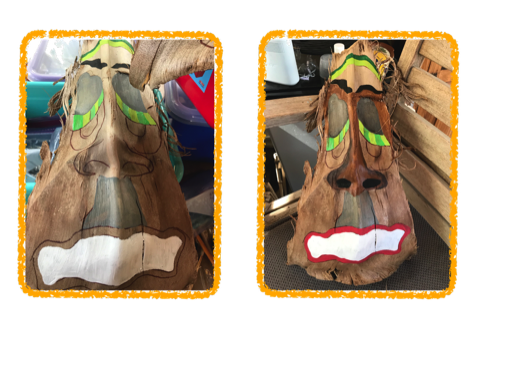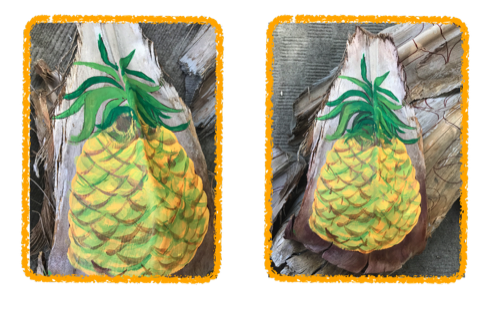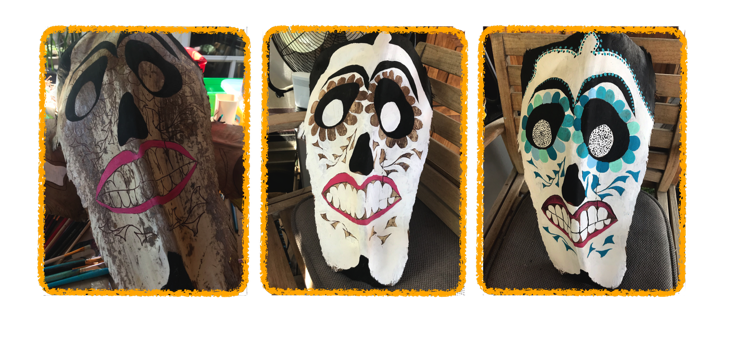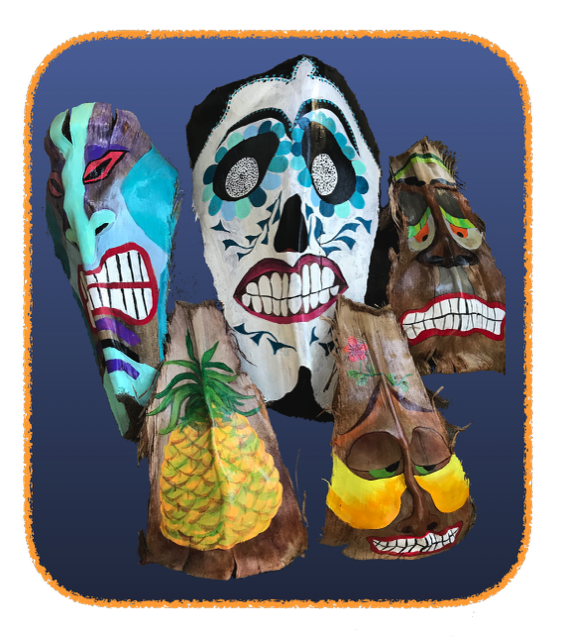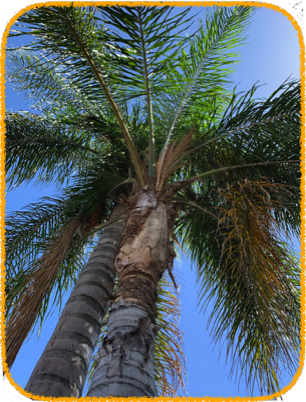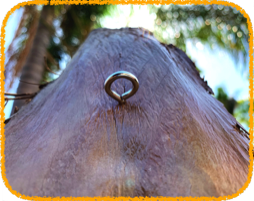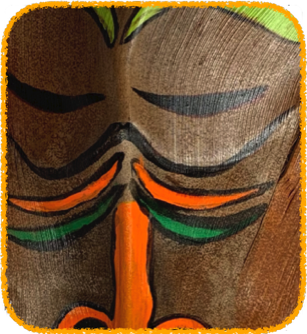

Here's how a tired old palm frond becomes a tiki treasure. SPOILER ALERT: The truth is, it's mainly just a whole bunch of hard work - but Tiki Trish loves it. The real magic happens when you adopt one of these little guys and hang it up in your own personal tiki space!
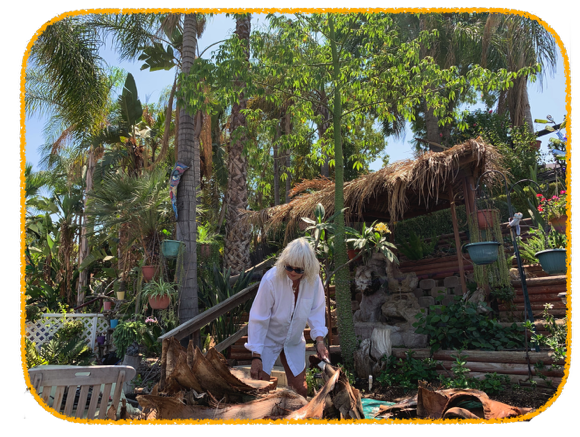
First you have to coax the little fellows down off the tree. True, a frond will fall by itself eventually but the tree is happier if it can get rid of it shortly after the branch uses-up its little self and is just hanging there feeling dejected.
Now, this is a pretty dirty job and sometimes it's downright dangerous. Let's say you have to actually go up the tree. It's a long way up - and a long way down. It's nice when you can avoid that. If possible, it's better to find a tree whose fronds can be reached by means of a really long, extendable combination saw and frond puller gizmo.
Sometimes the branch is still attached to its base, which is the part Trish uses, and sometimes it isn't. If the branch is still attached you give it a yank and 20 pounds of leafy mayhem shoots down all at once, threatening to bonk you, spear you, or otherwise rearrange parts of yourself you already like just fine the way they are.
If it's only a frond, without the branch attached, it still weighs a couple of pounds and often more. You give the frond a gentle tug whereupon it obligingly hurtles down at you from 40 feet up. Sometimes it brings along a neighbor or two. It's nice when it doesn't aim itself directly at you but more often than not you end up playing matador with it. It requires a certain amount of agility and a paid-up health insurance policy.
And then there's the dirt and debris. A palm frond makes a perfect catcher's mitt for anything that falls from the tree above it - and just about everything on the tree is above it. It's remarkable how much junk accumulates behind a frond: chunks of bark in various stages of decay, palm seeds, which come in bunches and are almost the size of a ping-pong ball but a whole lot heavier, and, of course, the occasional scary bug.
All of this stuff comes raining down on you and you can't avoid most of it. Eye protection is pretty much mandatory and it's recommended you wash your ears thoroughly afterward to avoid growing a palm tree out of the side of your head.
Okay, having survived the harvesting phase, Trish now inspects the fronds, looking for character and possibilities in the natural flow of the fiberous wood.
She sorts them according to size and scrubs them clean with soap and water, front and back. Here she is in her own version of the Hanging Gardens of Babylon. Somehow, she managed to create it over many years. It began as a steep, arid, alluvial hillside. She brought in fertile soil and hauled it up the hillside by herself - one bucketful at a time - filling terraces she constructed. Most of Trish's tikis come from these very trees.
Trish then applies a sealant to each palm frond. This helps bring out the natural grain, protects the frond so it will be durable for many years, and allows it to accept the the acrylic paint she will apply later.
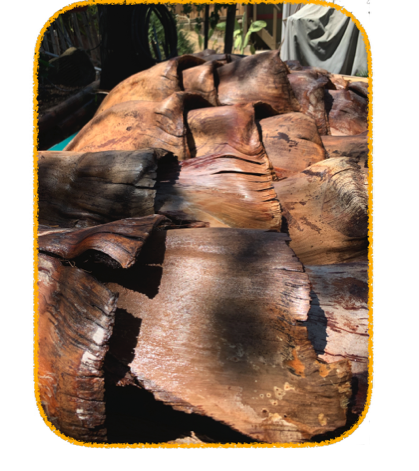

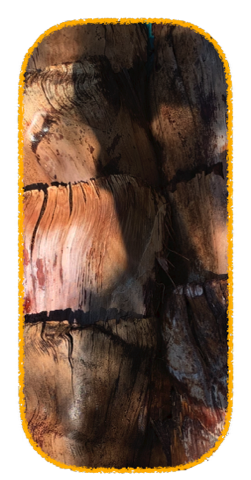
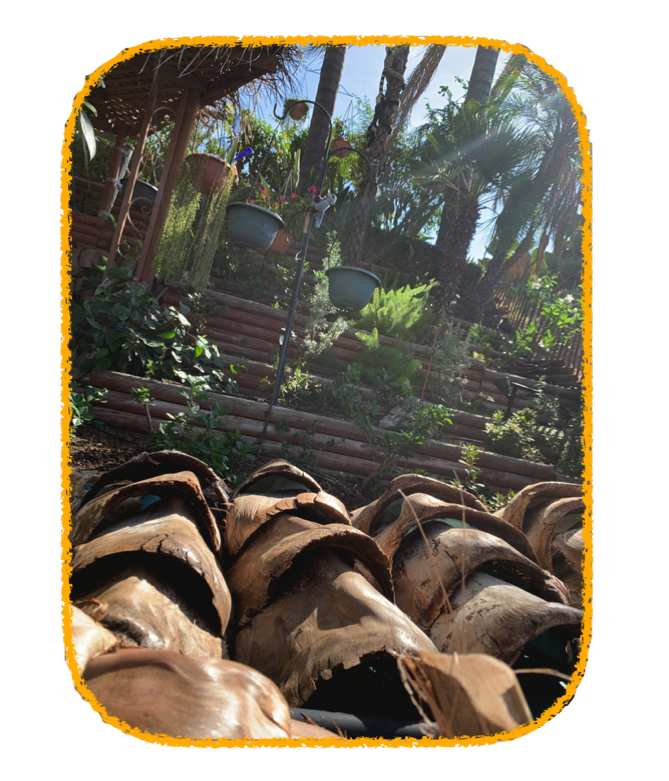
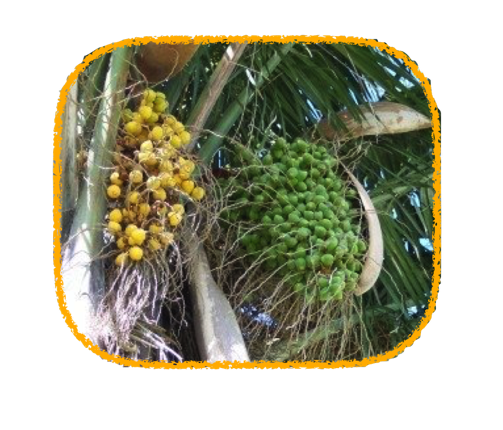
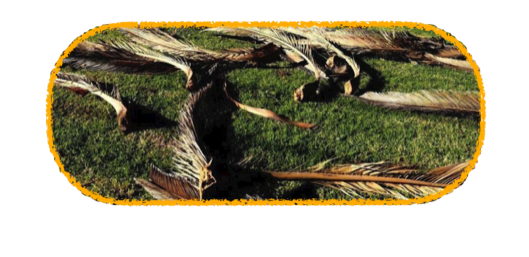
Up to this point the process has consisted mainly of blunt force and a willingness to toil in the hot sun. But here's where the art part finally kicks-in. It starts with Trish picking up a palm frond and staring at it for a really long time. Eventually it speaks to her and tells her what it wants to be. Or perhaps that's just the heat.
Anyway, by some process that defies both logic and explanation, Trish studies the contours, texture, and natural colors of each piece, divines its inner tiki-ness, and painstakingly undertakes to give it a face, a personality, and a new lease on life.
Trish kicks things off by drawing part or all of the design, using a soft pencil and light strokes. She does this freehand.
She adds depth and highlights through the use of shading, feathering, and other techniques. Some areas might require more than one coat to cover adequately or to create an effect Trish envisions.
At this point, a sturdy eyehook is screwed securely into the reverse side of each frond to allow for easy display of the finished tiki.
Trish allows the paints to dry thoroughly and then applies a second coat of spray sealant to protect the painted design from dirt, fingerprints, and fading and generally to ensure its longevity.
And, VOILA! It's tiki time, boys and girls! Another happy palm frond is rescued from an ignominious fate as garden mulch and instead attains tiki glory!
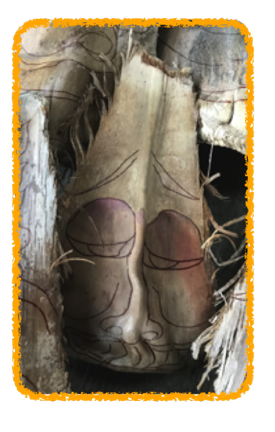
With a steady hand, an imaginative eye, and a flexibility that allows her to alter or enhance her design on the fly, Trish brings the tiki to life with acrylic paints and a variety of brushes.
